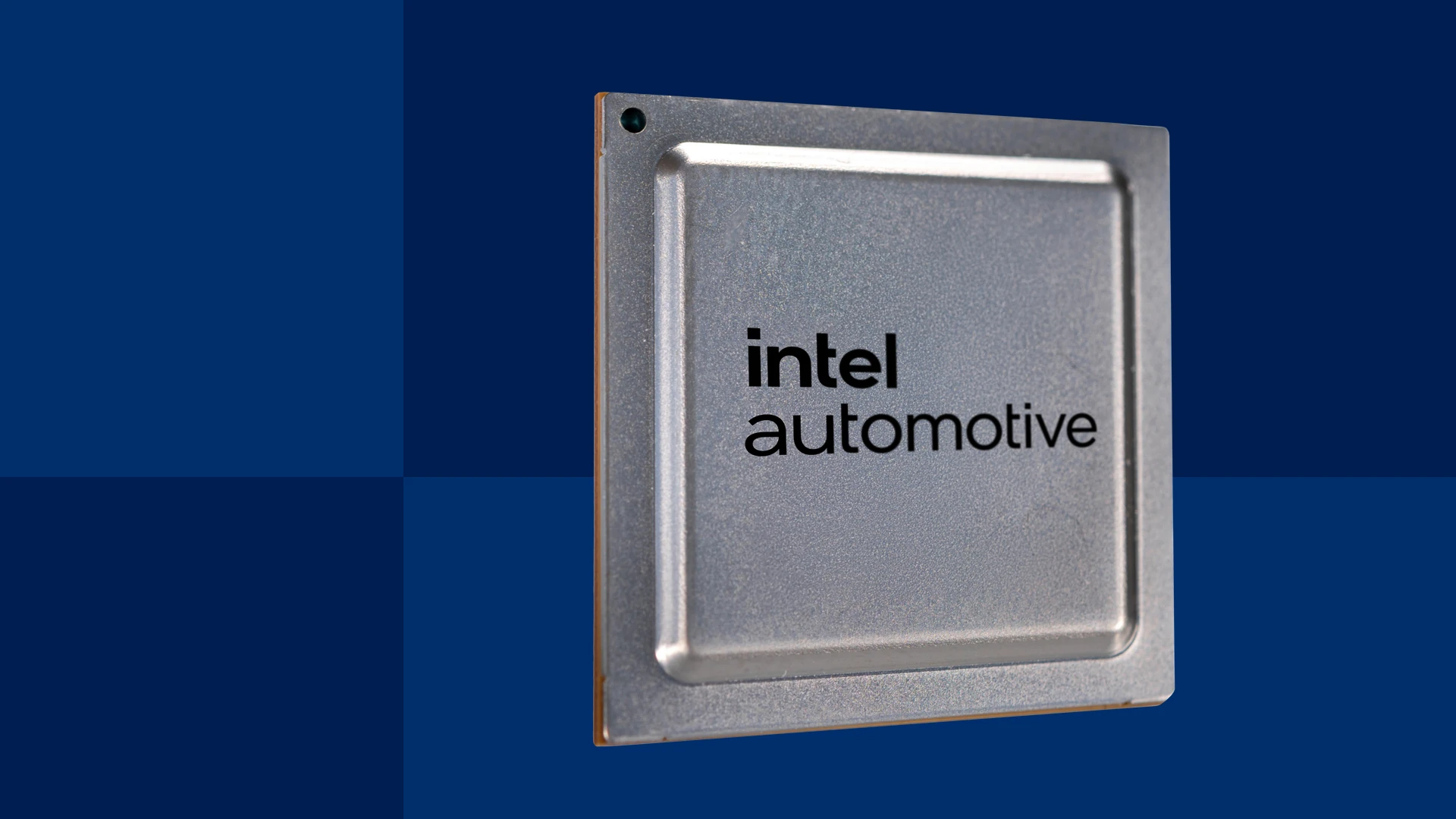
Intel, in collaboration with AWS, introduced a groundbreaking automotive chip aimed at advancing electric vehicles (EVs) and software-defined vehicles (SDVs). As the automotive industry shifts towards sustainability and advanced driver-assistance technologies, this partnership highlights crucial investments for future innovation.
Utilizing cloud-native tools and AI, the collaboration aims to streamline development, enhance driver experiences, and reduce costs. The development of the ACU and VDE represents a significant step in transforming the industry, focusing on sophisticated, adaptable, and continuously improving electric vehicles.
The Future of Electric Vehicle Technology
Intel and AWS Collaboration
Intel and Amazon Web Services (AWS) have teamed up to create a new chip for electric vehicles (EVs). This partnership was announced at CES 2025. The chip is designed to help car makers build better EVs faster. It’s part of Intel’s larger plan to support the move to software-defined vehicles (SDVs). These are cars where software plays a much bigger role than in older models.
“Intel automotive is bringing innovative solutions that reduce cost in the SDV revolution. Our whole-vehicle approach, combined with cloud integration, delivers a complete solution that drives down total cost of development and deployment while empowering automakers to build the future of mobility faster, more efficiently and more profitably.”
— Jack Weast, Intel Fellow, vice president and general manager of Intel Automotive
The Adaptive Control Unit (ACU)
The main part of this new technology is the Adaptive Control Unit (ACU). This is a special type of processing unit. It’s made for EV powertrains and zonal controllers. A powertrain is what makes the car move, including the motor and battery. Zonal controllers manage different sections or “zones” of a vehicle’s electrical system. The ACU can handle many jobs at once. This includes tasks that need to happen in real-time, those that are very important for safety, and those that must be protected from cyberattacks. Putting all these functions into one chip makes things simpler and more efficient.
Virtual Design Environment (VDE)
Intel and AWS also built a new tool called the Virtual Design Environment (VDE). This is a virtual space where car makers can design and test new car systems. Using a virtual environment speeds up the design process. It also cuts down on costs. This is because companies can test things on computers instead of building physical prototypes right away.
A Complete Platform for Automakers
Intel now provides a full platform for automakers. This includes:
- High-performance computing: Powerful processors for complex tasks.
- Separate graphics: Special chips for displaying images and videos.
- Artificial intelligence (AI): Technology that allows cars to learn and make decisions.
- Power management: Systems to control how energy is used in the vehicle.
- Zonal controller solutions: Ways to manage the different electrical zones in the car.
This complete approach is meant to address the problems car companies have with cost and performance when making SDVs.
Benefits of the New Technology
This new chip and the related tools offer several benefits:
- Faster development: Car makers can design and test new systems more quickly.
- Lower costs: Virtual testing reduces the need for expensive prototypes.
- Improved performance: The ACU can handle many tasks efficiently.
- Enhanced safety: The chip is designed with safety-critical operations in mind.
- Better cybersecurity: The ACU includes features to protect against cyberattacks.
Comparison of Traditional and SDV Architectures
Here’s a table comparing traditional and SDV architectures:
| Feature | Traditional Architecture | SDV Architecture |
|---|---|---|
| Software Updates | Difficult and infrequent | Easy and frequent (over-the-air) |
| Hardware | Many separate control units | Fewer, more powerful computers |
| Flexibility | Limited | High |
| Features | Fixed at time of purchase | Can be added or changed later |
What This Means for the Future of EVs
This partnership between Intel and AWS is a big step for EV technology. It will likely lead to:
- More advanced EV features.
- Faster innovation in the EV market.
- Lower costs for EVs in the long run.
The Role of Software in Modern Vehicles
The move to software-defined vehicles (SDVs) is a major shift in the automotive industry. In the past, cars relied mostly on hardware for their functions. Now, software is becoming just as important, if not more so. This means that cars can be updated and improved over time with software updates, much like smartphones. Software also enables new features like advanced driver-assistance systems (ADAS), improved infotainment systems, and personalized settings. The ACU and the VDE are examples of how software is changing how cars are designed and built. This trend is expected to continue, with software playing an even bigger role in the cars of the future.
Short Summary:
- Intel launches Adaptive Control Unit (ACU U310) to streamline EV powertrain management.
- The partnership with AWS introduces the Intel Automotive Virtual Design Environment for a unified development platform.
- Innovations aim to enhance energy efficiency, reduce production costs, and deliver advanced driver experiences.
At the Consumer Electronics Show (CES) 2025 in Las Vegas, Intel and Amazon Web Services (AWS) made headlines with groundbreaking announcements aimed at revolutionizing the automotive sector. Intel introduced its cutting-edge Adaptive Control Unit (ACU U310), a significant advancement tailored specifically for electric vehicle (EV) powertrains and zonal controller applications. This new chip is designed to consolidate multiple real-time and safety-critical functions into a single, highly efficient processing unit, transforming the landscape of modern automotive technology.
Jack Weast, Intel Fellow and Vice President and General Manager of Intel Automotive, highlighted the importance of these innovations by stating,
“Intel automotive is bringing innovative solutions that reduce cost in the SDV revolution. Our whole-vehicle approach, combined with cloud integration, delivers a complete solution that drives down total cost of development and deployment while empowering automakers to build the future of mobility faster, more efficiently and more profitably.”
The ACU U310 represents a revolutionary step in vehicle architecture. Unlike traditional microcontrollers that struggle with managing multiple workloads due to limited processing capabilities, the ACU offers flexible logic that offloads real-time control tasks from its CPU cores. This results in improved performance and reliable operability even under complex conditions. By effectively managing these functions within a single chip, Intel positions itself at the forefront of the automotive industry’s technological advancements.
Enhancing Efficiency and Performance
The ACU not only boosts vehicle energy efficiency—allowing up to 40% energy reclamation from powertrain losses—but also enhances driving responsiveness. This unit automatically adjusts high voltage and control frequencies based on driving conditions and individual driver patterns, leading to a substantial efficiency increase during standardized testing. As a result, vehicles are not only more responsive but also achieve improved range and reduced energy costs, which are vital for the economic viability of electric vehicles.
Strategic Partnerships to Propel Innovation
Complementing the launch of the ACU, Intel announced its collaboration with AWS to roll out the Intel Automotive Virtual Design Environment. This pilot project is poised to reshape how automotive engineers approach vehicle development by leveraging the robust capabilities of cloud computing.
In remarks about the collaboration, Matt Garman, CEO of AWS, stated:
“The future of the auto industry is linked to technological advancement and invention, and our collaboration with HERE is a powerful example of how AWS is accelerating innovation across manufacturing, connected vehicles, and driver experiences.”
This partnership provides automakers with essential tools to streamline the vehicle development life cycle, reducing the time and financial burden associated with research and development. By integrating hardware and software more seamlessly from design to real-world deployment, the virtual design environment is intended to enhance the efficiency of developing advanced driver assistance systems (ADAS) and other innovative automotive technologies.
Unifying Technologies for Better Results
Intel’s commitment to a whole-vehicle platform aims to tackle the inefficiencies often found in fragmented vehicle architectures. This integrated solution is expected to yield significant cost reductions while boosting overall vehicle performance. Automakers can expect a streamlined supply chain, allowing them to innovate quickly and cost-effectively.
Intel’s innovative design strategy extends to traditional automotive paradigms and encompasses advanced technologies that come together in the ACU. One such collaboration involves Stellantis Motorsports, which has integrated the ACU into their next-generation inverter control system utilized in competitive racing. This deployment emphasizes the significant performance enhancement delivered by Intel’s technology in high-stakes environments.
Real-World Applications and Future Prospects
Particularly in the realm of competitive racing, every efficiency gain translates into a critical competitive edge. As such, Intel’s ACU technology is not just designed for commuter vehicles but is also making its mark in performance-oriented vehicles. Karma Automotive has similarly expressed support for the ACU by highlighting features that enable unique driving profiles and energy optimization strategies.
The programmability aspect of the ACU allows it to serve multiple applications, acting as a software-defined zonal controller. This adaptability helps automakers transition toward software-defined vehicles efficiently, simplifying supply chains and improving product development cycles.
Next-Generation Graphics Solutions
Furthering its automotive capabilities, Intel also announced its upcoming second-generation Intel Arc B-series Graphics for Automotive, set for production by late 2025. This advancement aims to support advanced in-vehicle AI workloads and enhance human-machine interfaces. Incorporating cutting-edge graphics technology enables a wealth of immersive experiences within vehicles, particularly important as drivers and passengers increasingly seek entertainment and connectivity.
Further Details on Intel’s Automotive Advancements
ACU Technical Details and Benefits
The ACU U310 uses a “dual-brain” approach. This means it combines a CPU with a flexible logic area. This setup allows the chip to handle many tasks at once without losing performance. It ensures reliable data delivery, even when managing multiple microcontroller workloads. In EVs, the ACU U310 can adjust high voltage and control frequencies based on driving style and road conditions. This can reclaim up to 40% of powertrain energy losses, leading to a 3% to 5% efficiency boost (as measured by the WLTP). This results in longer driving range, faster charging, and a more responsive driving experience. It also reduces costs by decreasing the size of the electric motor and battery needed.
Real-World Applications of the ACU
- Stellantis Motorsports: This racing team will use the ACU in its next-generation inverter control. This will improve performance and efficiency in races. The technology will control the electric motor and recover energy during braking.
- Karma Automotive: This company will use the ACU in a co-branded inverter. It will feature special control algorithms to improve efficiency and offer four different driving modes. These modes include features like Torque Ripple Reduction and Range Boost. The ACU is programmable, making it adaptable to different vehicle designs and uses. This simplifies the move to SDVs and reduces vehicle complexity.
AI Enhancements and Graphics
Intel’s second-generation Intel Arc B-series Graphics for Automotive will be available by the end of 2025. This will provide more computing power for advanced AI tasks, better user interfaces, immersive in-vehicle experiences, and even PC gaming. When used with an Intel AI-enhanced SDV SoC, it offers scalable performance for complex AI tasks.
Virtual Development Environment on AWS
The Intel Automotive Virtual Development Environment on AWS provides a virtual space for hardware and software development. It uses Intel Xeon processors and, for the first time, integrates Intel’s Automotive SDV SoCs within the AWS cloud environment. This removes the need for expensive hardware simulators or developer boards. This collaboration speeds up innovation, lowers research and development costs, and reduces time to market.
Intel’s System-Level Advantage
Intel’s overall approach offers many benefits to car makers. These include lower costs, better vehicle performance, simpler development, improved energy use, easy AI integration, and faster time to market. All of this is supported by Intel’s global supply chain. This approach aims to provide a comprehensive solution to the challenges automakers face when building software-defined vehicles.
The increasing role of software in vehicles is also changing how cars are manufactured and maintained. Over-the-air (OTA) updates, a key feature of SDVs, allow car makers to improve existing features, add new functionalities, and fix bugs without requiring a physical visit to a service center. This not only enhances the user experience but also creates new business opportunities for automakers, such as subscription-based services and feature upgrades. This shift towards software-centric vehicles is transforming the automotive industry into a more dynamic and adaptable sector, similar to the consumer electronics industry.
About Intel
Intel Corporation is a leader in semiconductor innovation, consistently working to advance computing technology for industries across the globe. Its commitment to harnessing data’s potential for societal improvement remains at the forefront of its mission. For more on Intel’s innovations and industry developments, visit newsroom.intel.com.
About Amazon Web Services
As a comprehensive cloud service provider, AWS empowers businesses worldwide to scale their operations and innovate rapidly. With more than 240 services available, AWS remains a go-to solution for enhancing operational agility and reducing costs in various sectors, including automotive technology. To learn more, visit aws.amazon.com.






